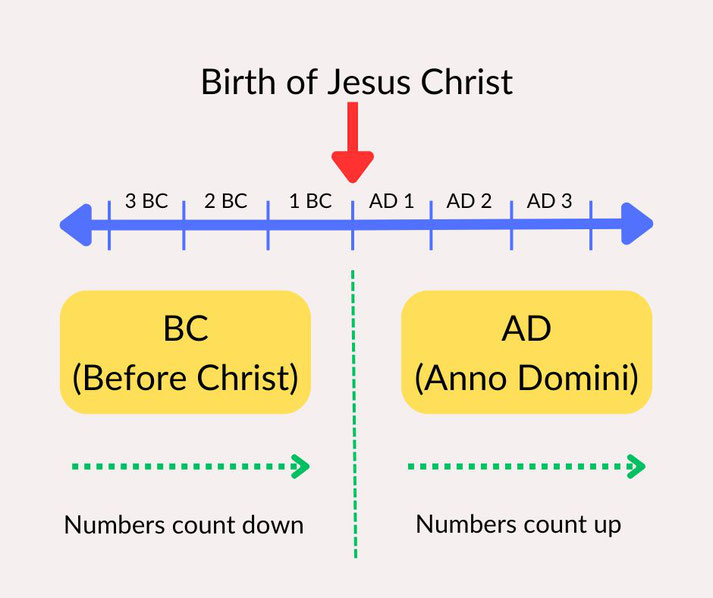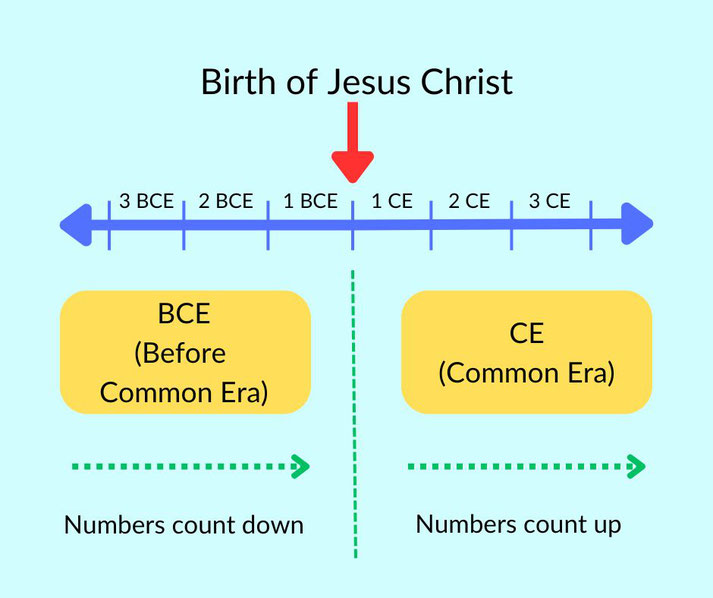What do AD and BC mean, as well as CE and BCE?

For anyone who wants to understand historical timelines, the abbreviations AD, BC, CE, and BCE can be pretty confusing.
You will often find these terms in history books and museums, since historians rely upon these terms to divide human history.
Therefore, knowing what these labels mean helps us understand how they organize time, and gives us a shared way to talk about the past.
AD and BC: The traditional system
The letters BC stand for 'Before Christ' and it refers to all the years that came before Jesus Christ's birth.
These numbers count backward from year 1. So, 500 BC is earlier than 200 BC.
In contrast, the letters AD is an abbreviation of the Latin phrase 'Anno Domini', which means 'in the year of our Lord'.
The ‘lord’ here is referring to Jesus Christ.
Historians use AD to label the years that followed Jesus's birth. From year 1, AD years move forward.
However, be aware that there is no year 0. Instead, the timeline moves directly from the year 1 BC to the year AD 1.
By the way, it is traditional practice for writers to place the AD before the year number, like AD 2024, but you will sometimes see it placed after, like 2024 AD.
The AD/BC system of counting years was developed in the 6th century by a monk named Dionysius Exiguus.
He used it to try and create a table that accurately calculated the date of Easter every year.
Once established, the Christian calendar spread across Europe. People who study religious and Western history still use it today.

CE and BCE: A more inclusive approach
To offer an alternative to AD and BC, more recent historians and scholars began using the terms CE and BCE instead.
To replace AD, they use CE, which means 'Common Era'.
Similarly, instead of BC, they use BCE, which means 'Before Common Era'.
Even though the letters are replaced, these terms follow the same rules: BCE counts backward, and CE counts forward from year 1.
These terms were primarily developed so that historians could discuss historical dates without having to refer to Christianity, since not everyone follows that religion.
However, it is important to note that regardless of which lettering system you used, the number of the year is the same.
For example, someone might say '300 BCE' instead of '300 BC.' Or they might say '1066 CE' instead of 'AD 1066.'

Does it matter which system you use in an assignment?
When you write an assignment, you should follow the rules that your teacher or school provided.
Some teachers prefer AD and BC, while others prefer CE and BCE.
As long as you stay consistent, either system usually works. Pick one system and use it throughout your assignment.
So why do some people say that AD means 'After Death'?
Some people who misunderstand history believe that AD stands for 'After Death', meaning after Jesus died.
This is obviously not correct. As you now know, the AD abbreviation refers to the years after Jesus was born, rather than the years after he died.
Why do we use these systems?
Both systems help us understand history by dividing time into 'before' and 'after' based on a single event. In this case, that event is the birth of Jesus.
Even though they use different names, all four terms serve the same purpose: to help us place events in order, whether we’re talking about ancient civilizations, empires, or important inventions.
No matter which terms you use, they are intend to make history easier to understand and meaningful for everyone.
What do you need help with?
Download ready-to-use digital learning resources
Copyright © History Skills 2014-2025.
Contact via email
With the exception of links to external sites, some historical sources and extracts from specific publications, all content on this website is copyrighted by History Skills. This content may not be copied, republished or redistributed without written permission from the website creator. Please use the Contact page to obtain relevant permission.





